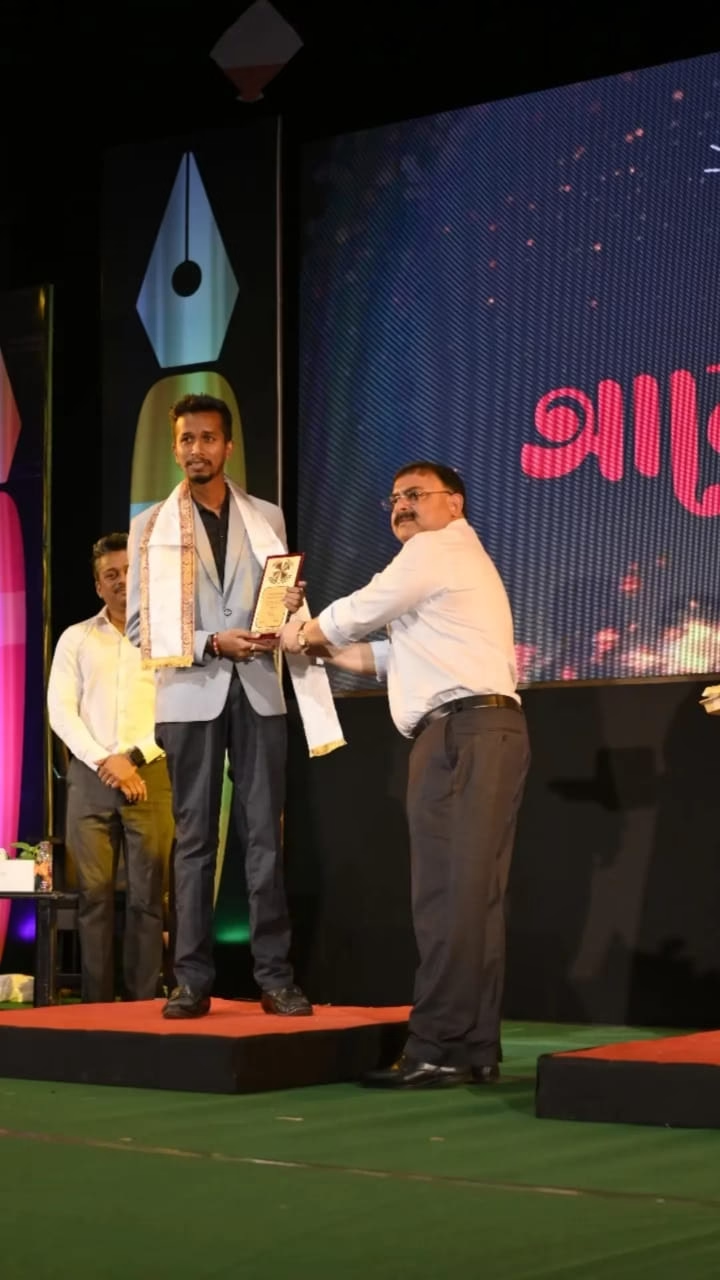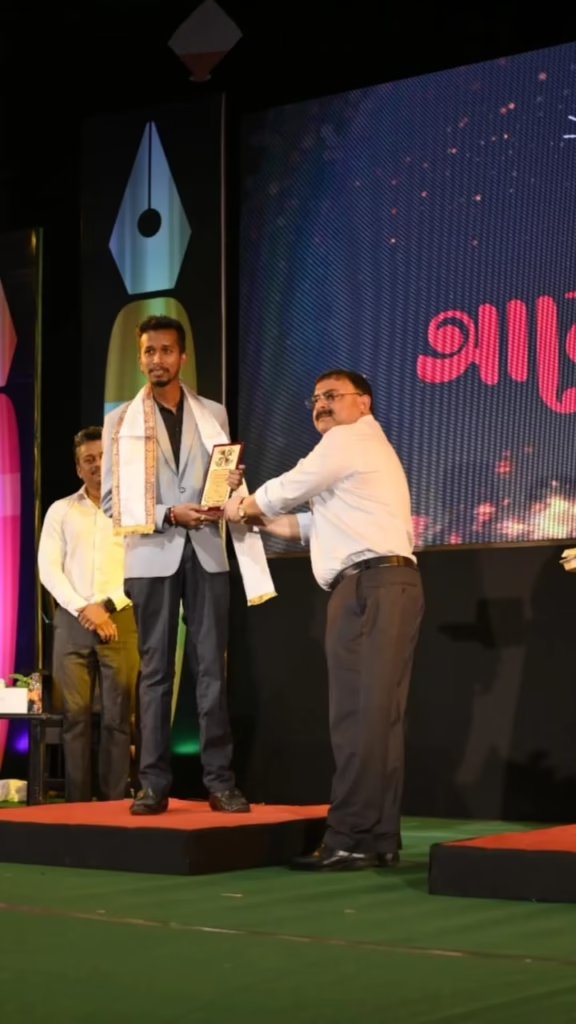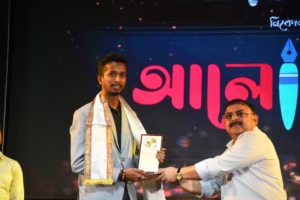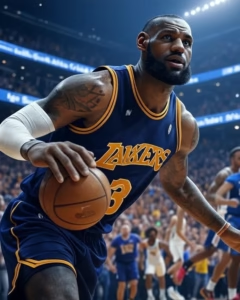📚 Mastering English Grammar Tenses: A Complete Guide

📚 Mastering English Grammar Tenses A Complete Guide
📚 Mastering English Grammar Tenses: A Complete Guide
English tenses are the heart of grammar 💓. Whether you’re speaking, writing, or answering in competitive exams, tenses decide your accuracy.
This guide covers:
✅ All 12 Tenses
✅ Simple Real-Life Examples
✅ Smart Tricks
✅ Exam Tips
✅ Practice Questions (Solved + Unsolved)
🧠 What Are Tenses?
Tenses show the time of an action.
We divide tenses into 3 types:
- Past (⏳ Already happened)
- Present (🔴 Happening now)
- Future (🔮 Will happen)
Each of these has 4 forms:
- Simple
- Continuous
- Perfect
- Perfect Continuous
So total = 3 × 4 = 12 Tenses
✅ PRESENT TENSE
1. Simple Present
🕐 Structure: Subject + V1 + s/es + Object
📌 Example: She eats rice.
👉 Used for habits, facts, daily routines.
💡 Tip: Use it with adverbs like always, usually, never.
2. Present Continuous
🕐 Structure: Subject + is/am/are + V1+ing + Object
📌 Example: I am studying now.
👉 Used for actions happening right now.
3. Present Perfect
🕐 Structure: Subject + has/have + V3 + Object
📌 Example: They have finished lunch.
👉 Used for recently completed actions.
4. Present Perfect Continuous
🕐 Structure: Subject + has/have been + V1+ing + Object + since/for
📌 Example: She has been reading for 2 hours.
👉 Used for actions that started in the past & are still continuing.
✅ PAST TENSE
5. Simple Past
🕐 Structure: Subject + V2 + Object
📌 Example: He went to Delhi.
👉 Used for actions completed in the past.
6. Past Continuous
🕐 Structure: Subject + was/were + V1+ing + Object
📌 Example: I was sleeping at 10 PM.
👉 Used for actions happening at a specific time in the past.
7. Past Perfect
🕐 Structure: Subject + had + V3 + Object
📌 Example: They had left before I arrived.
👉 Used to show the earlier of two past actions.
8. Past Perfect Continuous
🕐 Structure: Subject + had been + V1+ing + Object + since/for
📌 Example: He had been playing for an hour.
👉 Used to show long past action before another.
✅ FUTURE TENSE
9. Simple Future
🕐 Structure: Subject + will/shall + V1 + Object
📌 Example: We will go tomorrow.
👉 Used for future plans or predictions.
10. Future Continuous
🕐 Structure: Subject + will be + V1+ing + Object
📌 Example: She will be singing at 5 PM.
👉 Used to show an action in progress in the future.
11. Future Perfect
🕐 Structure: Subject + will have + V3 + Object
📌 Example: They will have finished the work by 8 PM.
👉 Used to show completed future action before a certain time.
12. Future Perfect Continuous
🕐 Structure: Subject + will have been + V1+ing + Object + since/for
📌 Example: He will have been studying for 3 hours.
👉 Used for actions continuing till a time in future.
🎯 TRICKS TO REMEMBER
💡 “HCP” Rule:
- H = Habit (Simple Present)
- C = Current (Present Continuous)
- P = Past done (Present Perfect)
⏰ Use “time words” as signals:
- Just, already, since, for, yesterday, tomorrow etc.
📈 Learn 1 tense daily → revise → practice 5 sentences.
📝 Solved Questions with Answers
- I ____ to school every day.
👉 go (Simple Present) - She ____ a letter now.
👉 is writing (Present Continuous) - They ____ dinner when I called.
👉 were having (Past Continuous) - We ____ the movie by 9 PM.
👉 will have watched (Future Perfect) - I ____ in this house since 2005.
👉 have been living (Present Perfect Continuous)
🧪 Unsolved Practice Questions
Try these yourself:
- She ____ (study) French for two years.
- They ____ (complete) the project yesterday.
- I ____ (go) to the market at 5 PM tomorrow.
- He ____ (work) when the lights went off.
- You ____ (see) this film already?
🏆 Exam Tips
✅ Focus more on Simple, Perfect & Continuous forms.
✅ Highlight time indicators like since, for, by, when.
✅ In error-spotting, look for tense mismatch.
✅ Practice WH-questions with different tenses.
✅ Create your own timeline diagrams for clarity.
📢 Learn. Practice. Speak.
With this guide from Grandmaster Bikram Sutradhar | bAstronautWay & SirBikramSutradhar Team| , you’ll never get confused in English Tenses again!
🧠 REMEMBER: Mastery comes from small daily practice! 🚀
📘 What Are V1, V2, V3?
They refer to forms of verbs in English grammar. Every verb has three main forms:
| Form | Name | Example (Verb: Go) | Emoji Meaning |
| V1 | Base Form | go | 🔹 Present |
| V2 | Past Simple | went | ⏳ Past |
| V3 | Past Participle | gone | ✅ Used in Perfect Tenses |
📌 Example: Verb – Eat
| Form | Word | Used In |
| V1 | eat | Simple Present → I eat rice. 🍚 |
| V2 | ate | Simple Past → I ate rice. 🍽️ |
| V3 | eaten | Present Perfect → I have eaten rice. ✅ |
💡 Quick Reference Chart:
| Verb | V1 (Base) | V2 (Past) | V3 (Past Participle) |
| Go | go | went | gone |
| Do | do | did | done |
| See | see | saw | seen |
| Write | write | wrote | written |
| Take | take | took | taken |
| Speak | speak | spoke | spoken |
🧠 TIP to Remember:
- ✅ Use V1 in Present Simple: I walk.
- ⏳ Use V2 in Past Simple: I walked.
- ⚡ Use V3 in Perfect Tenses: I have walked.

Written By
Full Stack Developer and 5-Time World Record Holder, Grandmaster Bikram Sutradhar
bAstronautWay : A Government-Approved Trademark Brand
SirBikramSutradhar on YouTube
SirBikramSutradhar is also a Government-Approved Trademark Brand.

Written By
Full Stack Developer and 5-Time World Record Holder, Grandmaster Bikram Sutradhar
bAstronautWay
SirBikramSutradhar on YouTube
More Story click the link
ICSE CLASS 10 ICSE CLASS 10 BIOLOGY BASTRONAUTWAY SirBikramSutradhar Bikram Sutradhar GrandMaster Bikram Sutradhar selina biology solutions ICSE Biology Selina Solution
📚 Class 9 Science – Complete Table of Contents (विषय-सूची)
CBSE | NCERT Curriculum | Bilingual (English + Hindi)
By Grandmaster Bikram Sutradhar | SirBikramSutradhar | BASTRONAUTWAY
🔬 PHYSICS (भौतिक विज्ञान)
| 🔢 | Chapter Title (English) | अध्याय का नाम (हिंदी) | Page No. |
| 1️⃣ | Motion | गति | |
| 2️⃣ | Force and Laws of Motion | बल तथा गति के नियम | |
| 3️⃣ | Gravitation | गुरुत्वाकर्षण | |
| 4️⃣ | Work and Energy | कार्य तथा ऊर्जा | |
| 5️⃣ | Sound | ध्वनि |
🧪 CHEMISTRY (रसायन विज्ञान)
| 🔢 | Chapter Title (English) | अध्याय का नाम (हिंदी) | Page No. |
| 1️⃣ | Matter in Our Surroundings | हमारे आस-पास के पदार्थ | |
| 2️⃣ | Is Matter Around Us Pure? | क्या हमारे आस-पास के पदार्थ शुद्ध हैं? | |
| 3️⃣ | Atoms and Molecules | परमाणु एवं अणु | |
| 4️⃣ | Structure of the Atom | परमाणु की संरचना |
🧬 BIOLOGY (जीव विज्ञान)
| 🔢 | Chapter Title (English) | अध्याय का नाम (हिंदी) | Page No. |
| 1️⃣ | The Fundamental Unit of Life | जीवन की मौलिक इकाई | |
| 2️⃣ | Tissues | ऊतक | |
| 3️⃣ | Improvement in Food Resources | धनों में सुधार |
📘 ADDITIONAL SECTIONS (अतिरिक्त अनुभाग)
| 📖 Section | Title (English + Hindi) |
| 🔹 | Glossary / पारिभाषिक शब्दावली |
| 🔹 | Answer Keys / उत्तरमाला |
| 🔹 | Summary / सारांश |
| 🔹 | Important Diagrams / महत्वपूर्ण चित्र |
| 🔹 | NCERT Exercises / एनसीईआरटी अभ्यास |
| 🔹 | Sample Papers & MCQs / मॉडल पेपर व वस्तुनिष्ठ प्रश्न |
✅ All content follows the official NCERT Class 9 Science textbook structure. Each chapter will include explanations, bilingual notes, definitions, diagrams, MCQs, FAQs, and practice exercises under the BASTRONAUTWAY learning system.
class 10 Maths ncert solution.
CBSE Class 10 Mathematics (2025) NCERT Syllabus:
CBSE Class 10 Mathematics NCERT Syllabus (2025) – Chapter-Wise List
CBSE Class 10 Mathematics NCERT Syllabus (2025) – Chapter-Wise List
chapter 4. Quadratic Equations
chapter 5. Arithmetic Progressions
chapter 6. Triangles
chapter 7. Coordinate Geometry
chapter 8. Introduction to Trigonometry
chapter 9. Some Applications of Trigonometry
chapter 11. Areas Related to Circles
chapter 12. Surface Areas and Volumes
CBSE Class 10 Science (2025) NCERT Syllabus:
CBSE Class 10 Science NCERT Syllabus (2025) – Chapter-Wise List
CBSE Class 10 Science NCERT Syllabus (2025) – Chapter-Wise List
Chapter 1 Chemical Reactions and Equations
Chapter 2 Acids, Bases and Salts
Chapter 3 Metals and Non-metals
Chapter 4 Carbon and its Compounds
Chapter 5 Life Processes
Chapter 6 Control and Coordination
Chapter 7 How do Organisms Reproduce?
Chapter 8 Heredity
Chapter 9 Light – Reflection and Refraction
Chapter 10 The Human Eye and the Colourful World
Chapter 11 Electricity
Chapter 12 Magnetic Effects of Electric Current
Chapter 13 Our Environment
📖 Chapter 12 – Organic Chemistry (Selina Textbook)
Table of Contents:
- 12A. Organic Compounds
- 12B. Hydrocarbons: Alkanes
- 12C. Hydrocarbons: Alkenes
- 12D. Hydrocarbons: Alkynes
- 12E. Alcohols
- 12F. Carboxylic Acids
- Exercise 12 MISCELLANEOUS
- Glossary
- Model Question Paper –
📌 Exercise 12 MISCELLANEOUS – Focus Areas:
- 🧬 Consolidated practice from the entire Organic Chemistry chapter
- 🧪 Application-based questions covering alkanes, alkenes, alkynes, alcohols, and carboxylic acids
- 🧾 Writing structural formulas and chemical equations
- 💡 Distinguishing reactions, isomer identification, and conversions
- 📘 Full-syllabus revision to boost conceptual clarity and board exam readiness
Each question in this section is designed to:
- ✅ Strengthen cross-topic understanding
- 📝 Prepare students for application-based and reasoning-based questions
- 🧠 Improve problem-solving speed and exam performance
class 5
📚 Class 9 Science – Complete Table of Contents (विषय-सूची)
CBSE | NCERT Curriculum | Bilingual (English + Hindi)
By Grandmaster Bikram Sutradhar | SirBikramSutradhar | BASTRONAUTWAY
🔬 PHYSICS (भौतिक विज्ञान)
| 🔢 | Chapter Title (English) | अध्याय का नाम (हिंदी) | Page No. |
| 1️⃣ | Motion | गति | |
| 2️⃣ | Force and Laws of Motion | बल तथा गति के नियम | |
| 3️⃣ | Gravitation | गुरुत्वाकर्षण | |
| 4️⃣ | Work and Energy | कार्य तथा ऊर्जा | |
| 5️⃣ | Sound | ध्वनि |
🧪 CHEMISTRY (रसायन विज्ञान)
| 🔢 | Chapter Title (English) | अध्याय का नाम (हिंदी) | Page No. |
| 1️⃣ | Matter in Our Surroundings | हमारे आस-पास के पदार्थ | |
| 2️⃣ | Is Matter Around Us Pure? | क्या हमारे आस-पास के पदार्थ शुद्ध हैं? | |
| 3️⃣ | Atoms and Molecules | परमाणु एवं अणु | |
| 4️⃣ | Structure of the Atom | परमाणु की संरचना |
🧬 BIOLOGY (जीव विज्ञान)
| 🔢 | Chapter Title (English) | अध्याय का नाम (हिंदी) | Page No. |
| 1️⃣ | The Fundamental Unit of Life | जीवन की मौलिक इकाई | |
| 2️⃣ | Tissues | ऊतक | |
| 3️⃣ | Improvement in Food Resources | धनों में सुधार |
📘 ADDITIONAL SECTIONS (अतिरिक्त अनुभाग)
| 📖 Section | Title (English + Hindi) |
| 🔹 | Glossary / पारिभाषिक शब्दावली |
| 🔹 | Answer Keys / उत्तरमाला |
| 🔹 | Summary / सारांश |
| 🔹 | Important Diagrams / महत्वपूर्ण चित्र |
| 🔹 | NCERT Exercises / एनसीईआरटी अभ्यास |
| 🔹 | Sample Papers & MCQs / मॉडल पेपर व वस्तुनिष्ठ प्रश्न |
✅ All content follows the official NCERT Class 9 Science textbook structure. Each chapter will include explanations, bilingual notes, definitions, diagrams, MCQs, FAQs, and practice exercises under the BASTRONAUTWAY learning system.





